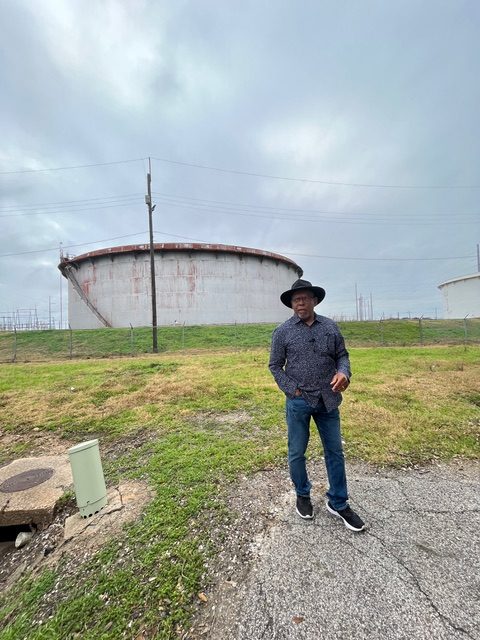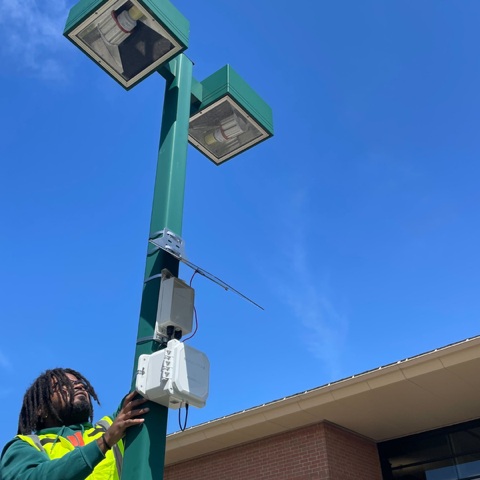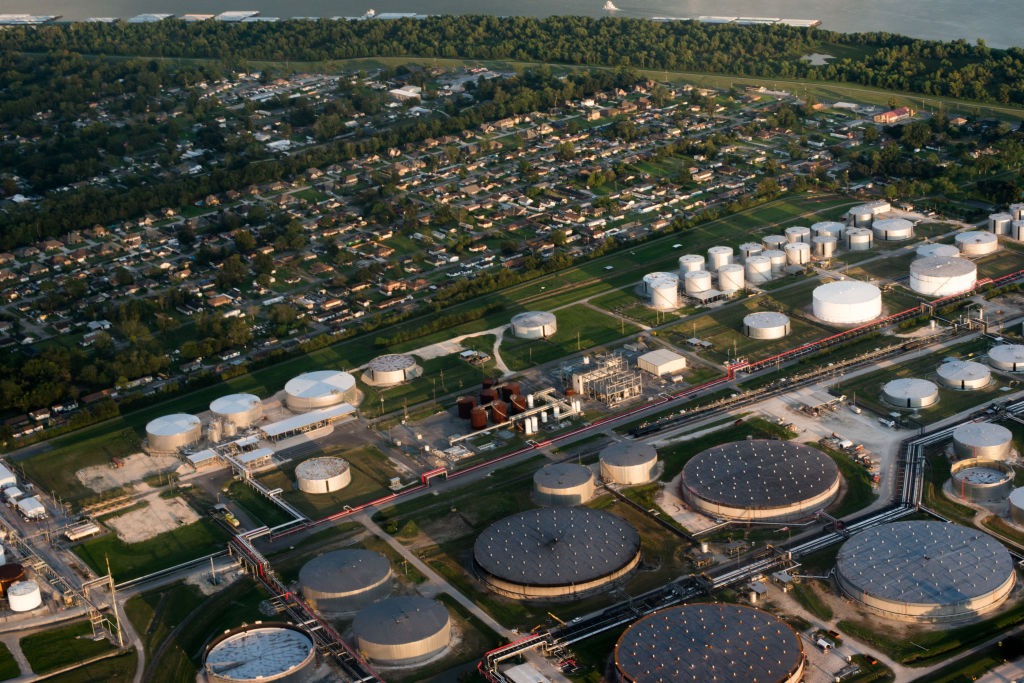Reporting for this story was supported by the Nova Institute for Health.
In the decades since Congress passed the Clean Air Act in the early 1960s, air quality monitoring has become one of the EPA’s central tools to ensure the agency delivers on the promise to protect people from polluted air. The EPA, in partnership with state regulators, oversees a network of roughly 4,000 monitors across the country that measure the levels of six pollutants detrimental to human health, including ozone, sulfur dioxide, and particulate matter.
But the network was primarily set up to track pollution from automobiles and industrial facilities such as coal-fired power plants near large population centers; as a result, the monitors are not evenly distributed across the United States. Of consequence, a 2020 analysis by the environmental group Natural Resources Defense Council found that more than 100 counties modeled to have unhealthy levels of particulate matter did not have an air quality monitor to track Clean Air Act compliance. And, research indicates that communities of color are often in closer proximity to industrial polluters and are disproportionately exposed to air pollution. Even the growing network of non-EPA, low-cost air quality sensors, such as PurpleAir, which are used to crowdsource real-time air quality data, are located predominantly in affluent White communities that can better afford them.
To better address these monitoring gaps, the EPA awarded $53 million in grants to 133 community groups in 2022. Earlier this year, many of these groups began setting up their own air quality monitors to identify pollution from a variety of sources including industrial operations, waste burning, and oil and gas development. The program is funded by the Inflation Reduction Act and the American Rescue Plan and was designed to invest in public health with a focus “on communities that are underserved, historically marginalized, and overburdened by pollution.”
“One of the best things EPA can do is continue to work closely with communities and state and local air agencies to address air issues in and around environmental justice areas,” said Chet Wayland, director of the EPA’s air quality assessment division. “I’ve been at the agency for 33 years; this is the biggest shift in monitoring capabilities that I’ve seen because of all this technology.”
But despite the funding, the groups that received EPA grants have no guarantee that their data will drive change. For one, some state lawmakers have passed legislation that blocks local regulators from utilizing monitoring data collected by community groups. While the EPA encouraged grantees to partner with regulatory bodies, they don’t require regulators to incorporate the data groups are collecting into their decision-making either. As a result, states could simply ignore the data. The program also places a burden on the very communities experiencing the country’s worst air quality who now have to figure out how to site, operate, and maintain monitors, tasks that require technical expertise.
Giles Clarke / Getty Images
Micah 6:8 was one of the dozens of community groups awarded an EPA grant to purchase an air quality monitor. The group was founded six years ago by Cynthia Robertson to serve the residents of Sulphur, Louisiana, located in southwest Louisiana’s sprawling petrochemical corridor. The low-income majority African-American community is exposed to toxic emissions from industrial polluters and is one of the state’s cancer hotspots, but, the Louisiana Department of Environmental Quality, or LDEQ, the state environmental agency, maintains just four air monitors in the region. None are positioned to detect levels of particulate matter from a cluster of nearby polluting plants. “We knew we needed air monitors,” said Robertson.
Yet Robertson’s data from the EPA-funded monitor will almost certainly not lead to regulatory changes. In May, Louisiana’s Republican Governor Jeff Landry signed legislation prohibiting the use of community air monitoring data for regulatory or legal affairs. The chief defenders of the bill were representatives from the Louisiana Chemical Association, a trade group representing the petrochemical industry. (State lawmakers passed a similar bill championed by industry in the West Virginia House, but it died earlier this year without Senate consideration.)
“I already know that my data won’t be heeded by LDEQ,” said Robertson. “In this state, it’s a pointless conversation [with regulators].”
LDEQ did not respond to a request for comment. The EPA declined to comment on the Louisiana law. “We strongly encouraged community groups to partner with a local or state agency that they could feed the data back to, but we recognize that this can vary across states,” said Wayland.
Still, collecting air quality data, Robertson said, has value. The EPA grant requires community groups to share their data with stakeholders, including local governments and the public. And even if the regulators won’t acknowledge her data, Robertson wants data to inform her community about what they are being exposed to. She is working with researchers at Carnegie Mellon to build a community-friendly website that will explain the data visually. If her neighbors have accurate information, she hopes it will shape who they vote for.
“[Having this data] will enable us to make grassroots changes,” she said. “When you have an upwelling of protest and distress from communities, then things will start to change.”
In Texas, Air Alliance Houston, a non-profit advocacy group, has been trying to get the state environmental agency to take its community-based monitoring data seriously with little success. Since 2018, the group has installed roughly 60 monitors to inform community members, identify advocacy opportunities to reduce pollution, and to provide evidence for the need for more regulatory monitoring. Air Alliance’s executive director, Jennifer Hadayia, said the Texas Commission on Environmental Quality, or TCEQ, disregarded their data when making permitting decisions for new industrial facilities. For example, she said, TCEQ relied on a particulate matter monitor in Galena Park, a suburb east of Houston, to renew a permit for a concrete batch plant in a neighborhood more than 15 miles away. It was “nowhere near the impact of the concrete batch plant,” she said.
In May, the group along with 11 other organizations including the Houston Department of Transportation, sent the TCEQ requests for changes to its proposed air monitoring plan for the state. The group highlighted the need for more air quality monitors in communities of color in Port Arthur, Beaumont, and north Houston. Data they collected near Houston’s Fifth Ward documented that the region’s air quality did not meet federal air quality standards for particulate matter on more than 240 days last year. In addition, the group noted the lack of independent monitors for ethylene oxide, a toxic chemical released by facilities that convert fracked gas into other chemical products, despite an increase in the number of these plants in Texas. (In addition to the six air pollutants monitored nationwide, the EPA and state environmental agencies also regulate 188 hazardous air pollutants emitted by industrial facilities. While 26 ambient air monitors exist around the country to detect these pollutants, none are located in Texas or Louisiana.)
Richard Richter, a spokesperson for TCEQ, said that while comments from Hadayia’s organization and others were “thoroughly reviewed, no changes were made to the draft 2024 plan based on the comments received.”
Richter noted that TCEQ has responded on multiple occasions to questions regarding externally-collected air monitoring data, despite having no dedicated resources to do so. But he did not share any evidence of taking action in response to community data when asked for examples. “In general, the TCEQ’s discussions with external parties about their air monitoring data will include topics such as data quality assurance, measurement accuracy, if the data can be evaluated from a health perspective (and if it can be evaluated, how to do so), and explanations about how community air monitoring data are often different from the monitoring data requirements for comparison to federal air quality standards,” he said in an emailed comment.
The agency’s attitude toward community air quality data could affect John Beard’s monitoring efforts. Beard is the founder of the Port Arthur Community Action Network, an environmental justice organization that has been advocating for better regulation of the petrochemical industry. He partnered with Micah 6:8 on a joint grant from the EPA and received one of two identical air quality monitors earlier this year.

Virginia Gewin
Port Arthur is home to the largest refinery in the country, Motiva Enterprises, which produces 640,000 barrels of oil a day. Last year, a Grist investigation found TCEQ allows Motiva and other companies to release over a billion pounds of sulfur dioxide, hydrogen sulfide, cancer-causing benzene, and other pollutants. Only 8 percent of such “excess emission” incidents, which typically occur due to machinery malfunctions, hurricanes, or power outages, received any penalty.
Given its track record, Beard said he doesn’t trust TCEQ or believe they will utilize the data his organization collects to inform regulatory changes. “They have an obligation to protect us, and they aren’t doing a very good job of it,” he said.
As the federal agency in charge of implementing and enforcing environmental laws, the EPA has considerable authority over local regulatory programs — but it cannot dictate where states place monitors. Funding community groups directly is the agency’s attempt to fill monitoring gaps, particularly in communities of color.
“EPA could have plowed a bunch of money into the state regulatory frameworks, and nothing would have changed,” said Matthew Tejada, senior vice president for environmental health at the Natural Resources Defense Council. He helped craft the EPA grant program when he was director of the agency’s office of environmental justice. Community science, on the other hand, can help democratize environmental health protection, he said. “It’s not going to be quick,” he added. “It’s not going to be painless.”
And ultimately it depends on communities’ ability to produce compelling, accurate data. To help communities produce the best data possible, the EPA required grant recipients to draft quality assurance plans and obtain approval from the agency prior to data collection. These plans ensure that the data being collected is replicable. EPA also provided all grantees with free contractor support for the development and review of those plans and other technical questions.
Richard Peltier, an atmospheric chemist at the University of Massachusetts Amherst who also works with community groups, said laws barring the use of data are detrimental to communities engaged in scientific research and undermine the state’s responsibility to protect its residents. The community-based air monitors, which are often lower quality, may produce noisy data which has greater variability compared to more tightly-controlled regulatory monitors, said Peltier, but they will still help identify hot spots of pollution in areas where researchers have never looked before. “The real strength of these community grants is that we will get data coming from where the people are, not where the monitors are,” said Peltier.
But it will require scientific capacity that some communities may struggle to access. Some groups found the requirements to assemble the expertise to site, run, and produce quality controlled, robust data, which must be shared online, too onerous. As a result of administrative or technological challenges, seven grantees didn’t move forward, according to the EPA.
Lake County Environmental Works, an environmental advocacy organization in Lindenhurst, Illinois, that Peltier advised, was one such group. The funding would have supplied a monitor to track ethylene oxide, a carcinogenic chemical that is used to sterilize medical equipment and notoriously difficult to measure. Ultimately John Aldrin, an engineer and founder of Lake County Environmental Works, determined he couldn’t volunteer the time necessary to manage a $160,000 ethylene oxide monitor that would require a significant amount of maintenance to produce sound data. “I think community groups need technical support from the EPA,” said Aldrin.
As it stands, Peltier added, the EPA community air monitor approach seems like a “do-it-yourself approach to public health.”

Courtesy of Darren Riley
Tejada joined the Natural Resources Defense Council last fall to help use community science to “support more and more communities doing good science that drives toward rules that are more protective, permits that limit pollution in a meaningful way, and make sure enforcement happens.” He advised community groups to get scientists involved to properly site the air monitors and develop a robust quality assurance data plan.
“EPA can and should do more” to help communities use their monitors to produce robust data, said Tejada, but they are constrained by limited funding, personnel, and statutory authority.
To meet the demand for scientific expertise, a cottage industry is developing to help community organizations use these monitors. Darren Riley, co-founder of Just Air Solutions based in Detroit, Michigan, is working with five different EPA community air monitor grantees around the country in addition to county and city officials. Riley said while it can be difficult to assemble the expertise in a community-based endeavor, he sees a resurgence of fight and energy and hopefulness that things are finally going to change. “EPA is sending a signal. People feel as though they are seen, which has helped morale,” he said. For communities, it’s a feeling of empowerment. “I hear the term ‘our data’,” he added.
And that, said Tejada, is the goal. “Community-based air quality monitors could finally deliver on the promise of the Clean Air Act,” he said.
Editor’s note: Natural Resources Defense Council is an advertiser with Grist. Advertisers have no role in Grist’s editorial decisions.
Source link
Virginia Gewin grist.org

